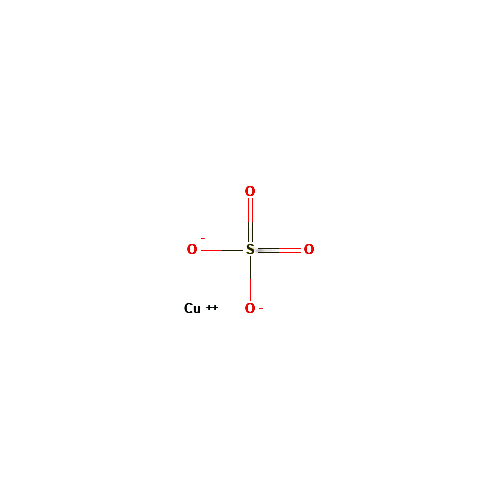Copper Sulfate
- Product Name : Copper Sulfate
- CAS : 7758-98-7
- Molecular Formula : CuSO4
- Molecular Weight : 159.61 g/mol
Global Calcium is one of the leading manufacturers and exporters of Copper Sulfate CAS no. 7758-98-7, Mineral Actives . We support the customers with exhaustive documentation. As a USDMF & EU-GMP certified global company and an established hallmark for pharmaceutical standards, Global Calcium has stood the test of time since its inception in 1979.
As manufacturer of Copper Sulfate we hereby state the following facts about the drug:
Copper is an essential trace element that is included in some over-the-counter multivitamin and mineral supplements. Copper deficiency is quite rare and supplementation is rarely needed. Copper (II) sulfate is a metal sulfate compound having copper (2+) as the metal ion.
Pharmacology:
Copper is one of the nine essential minerals for humans, as it plays an imperative role in various physiological pathways in basically all human tissue, as well as in the health of the dermis and epidermis. It is essential in wound healing, as it promotes angiogenesis and skin extracellular matrix formation and stabilization.
Mechanism of action:
This drug is an essential trace element for the functioning of many metalloenzymes including ceruloplasmin, ferroxidase II, lysyl oxidase, monoamine oxidase, Zn-copper superoxide dismutase, tyrosinase, dopamine-β-hydroxylase, and cytochrome-c-oxidase. It is involved in erythropoiesis & leukopoiesis, bone mineralization, elastin and collagen cross-linking, oxidative phosphorylation, catecholamine metabolism, melanin formation & antioxidant protection of cells. Cupric sulfate may also have a role in iron turnover, ascorbic acid metabolism, phospholipid metabolism, myelin formation, glucose homeostasis, and cellular immune defense. After the metal passes through the basolateral membrane it is transported to the liver, attached to serum albumin. The liver is the critical organ for the homeostasis of copper. The copper is then prepared for excretion through the bile or incorporation into various proteins. The transport of copper to the peripheral tissues is accomplished through the plasma attached to serum albumin, ceruloplasmin, or low-molecular-weight complexes. In the dermis, copper promotes dermal fibroblasts proliferation, upregulates collagen (types I, II, and V) and elastin fiber components (elastin, fibrillins) production by fibroblasts, through the induction of TGF-β, promotes heat shock protein-47, important for collagen fibril formation, serves as a cofactor of LOX enzyme required for extracellular matrix protein cross-linking, stabilizes the skin ECM once formed, as increased cross-linking of collagen and elastin matrices occurs in a copper dose-dependent manner, serves as a cofactor of superoxide dismutase, an antioxidant enzyme in the skin, essential for protection against free radicals, inhibits cellular oxidative effects such as membrane damage and lipid peroxidation, acts as a cofactor of tyrosinase, a melanin biosynthesis essential enzyme responsible for skin and hair pigmentation. In reference to its role as a biocide, copper is an essential nutrient for many organisms. It acts as a cofactor in respiration, and therefore copper is required for aerobic metabolism. Accumulation of copper ions or intracellular release of free copper ions from proteins leads to cell damage. Copper catalyzes reactions that result in the production of hydroxyl radicals through the Fenton and Haber-Weiss reactions. The highly reactive oxygen intermediates lead to lipid peroxidation and oxidation of proteins. Free copper ions oxidize sulfhydryl groups, such as cysteine, in proteins or the cellular redox buffer glutathione. In particular, copper ions inactivate proteins by damaging Fe-S clusters in cytoplasmic hydratases.
Drug indication:
- Elemental use in copper deficiency: Copper and copper-containing compounds are broadly used in medical practice. Metallic copper is used already for many years in dental fillings and in copper intrauterine devices (IUD) for reversible contraception.
- Ointments containing copper, which release copper ions that are absorbed by the skin in the management of cramps, disturbances of renal function, peripheral, venous hypostatic circulatory disturbances, rheumatic disease and swelling associated with trauma.
- There are also cosmetic facial creams containing copper as their main active ingredient.
- The amounts of copper found in typical supplements have not been associated with serum enzyme elevations or with clinically apparent liver injury. However, accidental or intentional copper overdose can cause an acute liver injury and chronic ingestion of excessive amounts of copper can result in copper overload and chronic liver injury.
- Acute copper (II) sulfate poisoning in the mouse induces renal tubular degeneration and necrosis.
Global Calcium is a leading manufacturer of this drug. We manufacture this pharmaceutical drug and make it available to domestic and overseas market



